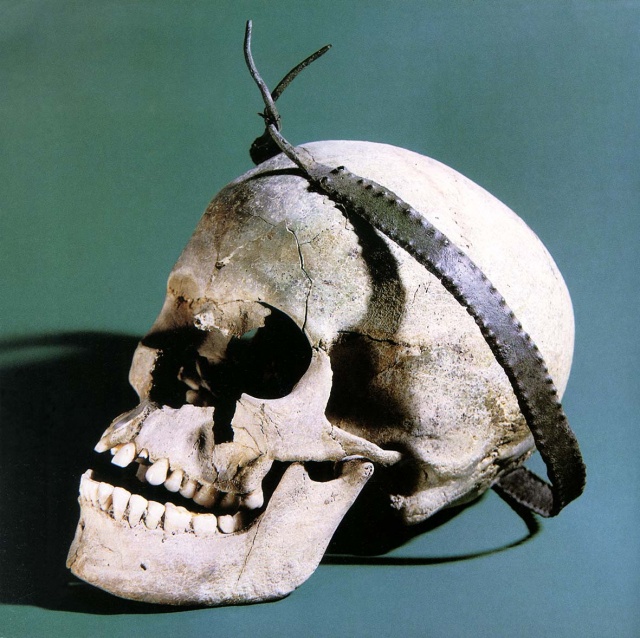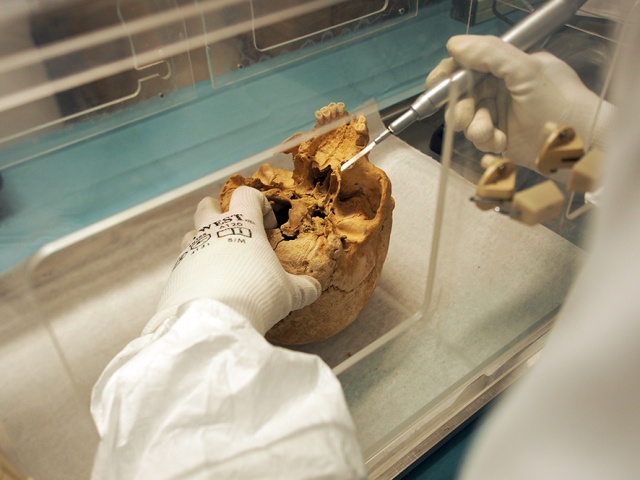The dynamic of admixture between hunter-gatherers and first farmers in Europe - new results in Nature
The new analysis of Marc Lipson (Harvard Med. School) and Anna Szécsényi-Nagy (Inst. of Arch. RCH HAS) obtained a genomic transect of unprecedented size and resolution from Hungary, containing almost every archaeological cultural formation of the Neolithic and Chalcolithic periods.
The Access the original article hereEuropean spread of agriculture (Neolithization) around 6500–5500 BC and the population history behind this phenomenon is a fundamental research question that has been a stark motivation not just for archaeologists and anthropologists but also for geneticists for several decades.
Evidence to support primary contact and interactions between local hunter-gatherers and early farmers has been very sparse to date in Hungary. Nevertheless, the hypothesis of a transition to farming, in which hunter-gatherers also took part, resurges from time to time in the discussions of the scientific community.
 Copper age female skull buried with copper diadem, Vörs, Hungary (Baden culture, 3600–2850 BC) Source: MTA BTK - photograph by Tibor Kádas courtesy of Mária Bodnár
Copper age female skull buried with copper diadem, Vörs, Hungary (Baden culture, 3600–2850 BC) Source: MTA BTK - photograph by Tibor Kádas courtesy of Mária BodnárKurt W. Alt of the Johannes Gutenberg University in Mainz, together with his international colleagues, chose three different regions of Europe (Hungary, central Germany and Spain) to study the European Neolithization with bioarchaeological methods (2006-2012). From Hungary, under the supervision of Eszter Bánffy (Institute of Archaeology, RCH, Hungarian Academy of Sc.), hundreds of bone samples were collected from museums and collections, helped and advised by over 50 local archaeologists and anthropologists.
The mitochondrial DNA results reported in Szecsenyi-Nagy et al. 2015 showed signs of discontinuity between local hunter-gatherers and first migrant farmers, albeit sporadic occurrence of hunter-gatherer mitochondrial DNA types were also observed. For a long time, it has been accepted in archaeological research circles that first farmers must have originated from the Middle-East, and mtDNA could not locate these origins more precisely. Mitochondrial DNA could not tell us exactly the proportions of hunter-gatherer contribution, and showed nothing about the temporal dynamic of possible interactions either.
However, the methodical innovations (mass SNP capture and next generation sequencing) applied by Prof. David Reich’s team at the Harvard Medical School in Boston allows genome wide analyses of ancient populations. In an extended partnership, the Laboratory of Archaeogenetics in the Institute of Archaeology, RCH HAS in Budapest were given the chance to reanalyze a selection of samples from the former German-Hungarian mitochondrial DNA projects, complemented with new Copper Age samples.
The new analysis of Marc Lipson (Harvard Med. School) and Anna Szécsényi-Nagy (Inst. of Arch. RCH HAS) et al. obtained a genomic transect of unprecedented size and resolution from Hungary, containing almost every archaeological cultural formation of the Neolithic and Chalcolithic periods.
 Excising the petrous part of the temporal bone of a human skull (for DNA sampling) Source: MTA BTK
Excising the petrous part of the temporal bone of a human skull (for DNA sampling) Source: MTA BTKIn the current paper, on a total of 130 newly reported ancient DNA samples spanning between 6000 BC and 2200 BC, the first measurements of dates of admixture in ancient human genomes are reported. The ability to do this allows researchers to model the temporal dynamics of forager-farmer interactions. The study presents that hunter-gatherer genetic ancestry increased continuously in all studied regions (Hungary, Germany and Spain) over 2500-3000 years, furthermore that there was continuous gene flow from local groups with more hunter-gatherer ancestry into farmer populations with more Anatolian ancestry. On the other hand, hunter-gatherer lineages in farmers were derived to a substantial extent from populations that lived nearby and this phenomenon genetically distinguished the populations of the three study regions.
“For Hungary, we built the first fitted quantitative model for interactions between hunter-gatherer and farmer groups.” says Anna Szécsényi-Nagy. “Here the most probable scenario is an initial (small-scale) admixture pulse between the two populations that was followed by continuous gene flow over many centuries.” The results from Hungary reflect the importance of building dense genomic series both in time and space, and meanwhile, they are also further motivating the research group to continue this strategy in order to deepen our knowledge about crucial phases of European prehistory.
